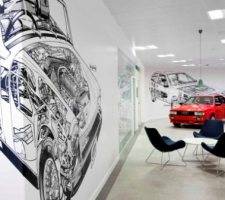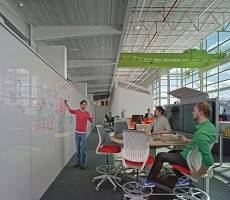November 14, 2014
EU institutions are not implementing their own green building policies
 According to a report on EU news site euractiv.com, the various institutions of the European Union have been ‘unambitious’ in terms of delivering energy efficiency as part of their own buildings strategies. That is the key finding of a new study from the European Court of Auditors. which claims that green building standards and initiatives developed and promoted by the EU are not consistently employed for new buildings or as part of major renovation projects carried out by bodies such as the European Commission, European Parliament, EU Council and other institutions. The special report reveals shortcomings in the approach of these bodies, calls on the EU Commission to propose a common policy for reducing the carbon footprint of EU institutions and bodies and proposes the setting of an overall reduction target for greenhouse gas emissions by the year 2030. The report claims that it is through the design processes of a new building, or for a major renovation, that the greatest impact can be made on its energy performance and this should be the focus of its proposed new approach.
According to a report on EU news site euractiv.com, the various institutions of the European Union have been ‘unambitious’ in terms of delivering energy efficiency as part of their own buildings strategies. That is the key finding of a new study from the European Court of Auditors. which claims that green building standards and initiatives developed and promoted by the EU are not consistently employed for new buildings or as part of major renovation projects carried out by bodies such as the European Commission, European Parliament, EU Council and other institutions. The special report reveals shortcomings in the approach of these bodies, calls on the EU Commission to propose a common policy for reducing the carbon footprint of EU institutions and bodies and proposes the setting of an overall reduction target for greenhouse gas emissions by the year 2030. The report claims that it is through the design processes of a new building, or for a major renovation, that the greatest impact can be made on its energy performance and this should be the focus of its proposed new approach.






























November 7, 2014
Orgatec 2014 focuses on collaboration, quiet and wellbeing in the workplace
by Anna King • Comment, Events, Furniture, Workplace design
Anna King reports from the biennial office furniture and interiors fair Orgatec, which took place recently in Cologne: Collaboration seemed to be king once again at this year’s Orgatec trade fair in Cologne, so much so that you’d be hard pressed to find a conventional workstation amongst the thousands of products on display. Even ergonomic task chairs in the traditional sense were thin on the ground. Senator’s offering was typical in its focus on collaborative work and the provision of work settings. As well as the Ad-Lib Scholar range for educational establishments, it presented the Ad-Lib Work Lounge multipurpose chair, both the work of British design studio PearsonLloyd. This upholstered model complete with headrest is available on glides or castors so it can slot into a multitude of workplace scenarios. Shown in some rich shades such as moss green and turquoise, it comes complete with a fold-down worksurface for brainstorming or other group working.
More →